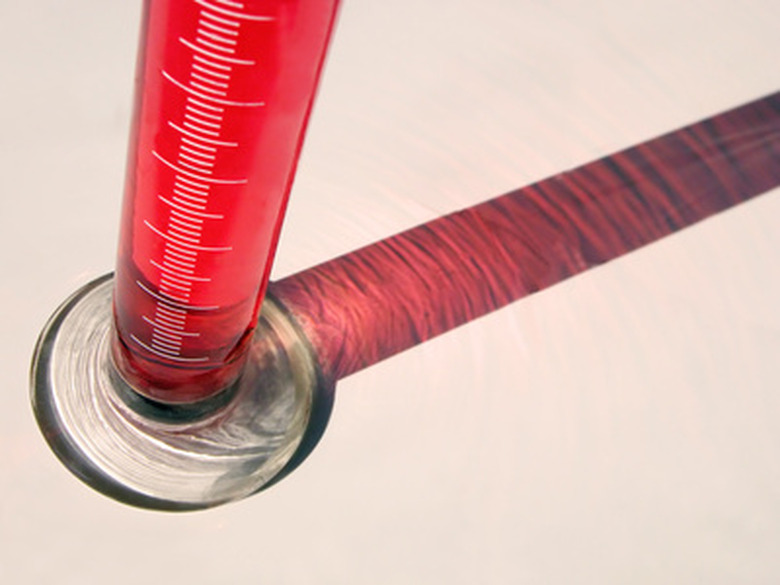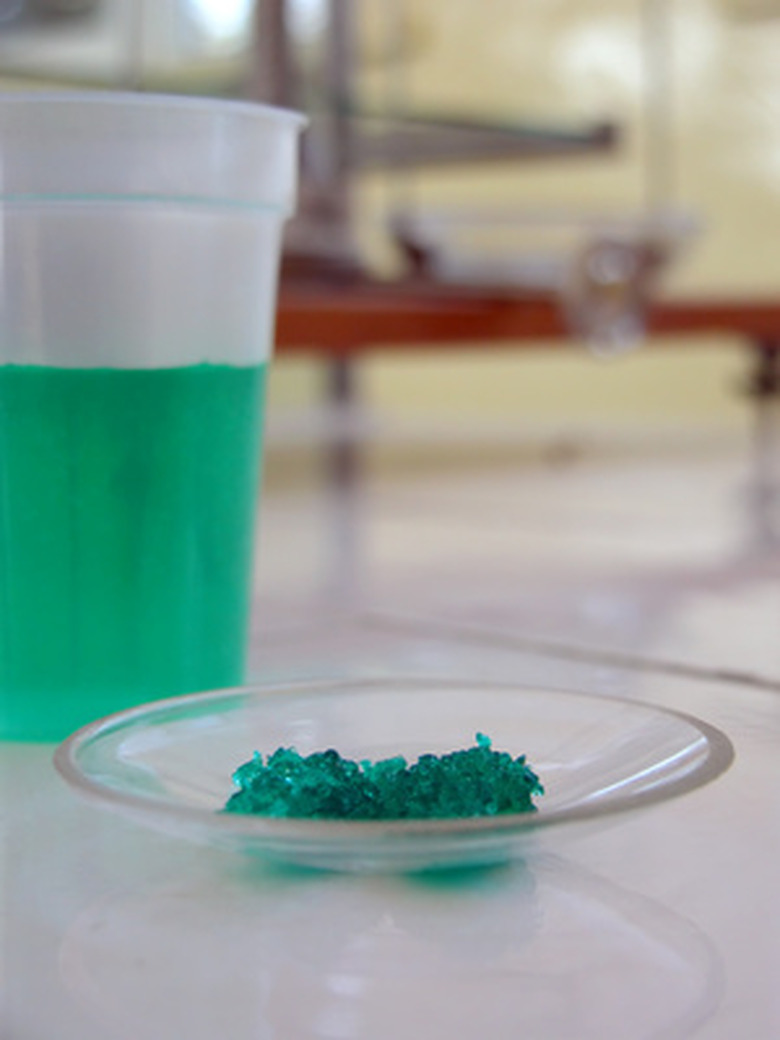How To Calculate The Percent Weight Per Volume
Percent weight per volume is defined as the grams of solute in 100 milliliters of solution. The calculation provides information about the concentration of the solution. A percentage expresses the number of parts of a particular substance per 100 total parts. The solute is a substance present in the solution in an amount less than that of the solvent. This calculation is most useful when the solute is a solid while the overall solution is a liquid.
Things Needed
- Pen/pencil
- Paper
- Scale
- Calculator (optional)
Step 1
Start with the amount of solute you know to be present in the solution, expressed in grams.
Step 2
Determine the total volume in milliliters of the solution.
Step 3
Divide the grams of solute by milliliters of solution (result of Step 1 divided by result of Step 2).
Step 4
Multiply the resulting number (of Step 3) by 100 to get the percent weight per volume.
TL;DR (Too Long; Didn't Read)
Percent weight per volume should always be calculated using grams for the solute and milliliters for the solution. Be sure to convert to these units if they are not already in use.
References
- "Chemistry for Today: General, Organic, and Biochemistry"; Spencer L. Seager, Michael R. Slabaugh; 2005
Cite This Article
MLA
NarkissPressburger, . "How To Calculate The Percent Weight Per Volume" sciencing.com, https://www.sciencing.com/how-6393730-calculate-percent-weight-per-volume/. 9 January 2018.
APA
NarkissPressburger, . (2018, January 9). How To Calculate The Percent Weight Per Volume. sciencing.com. Retrieved from https://www.sciencing.com/how-6393730-calculate-percent-weight-per-volume/
Chicago
NarkissPressburger, . How To Calculate The Percent Weight Per Volume last modified March 24, 2022. https://www.sciencing.com/how-6393730-calculate-percent-weight-per-volume/

